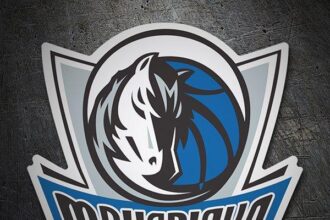In a candid revelation, Indiana Pacers guard Tyrese Haliburton has opened up about his decision to play through injury during the NBA Finals, admitting that he sought advice from Brooklyn Nets superstar Kevin Durant before taking the court with a strained calf. The young guard’s admission offers rare insight into the difficult choices athletes face when weighing the risks of playing hurt on basketball’s biggest stage. Haliburton’s experience underscores the tough balance between competitive drive and long-term health, shedding light on a conversation that resonates across the league.
Tyrese Haliburton Opens Up on Injury Decisions During NBA Finals
Tyrese Haliburton recently revealed the intense internal debate he faced before taking the court in the NBA Finals with a strained calf injury. The rising star admitted that the decision wasn’t made in isolation; he sought guidance from none other than Kevin Durant, a seasoned veteran with a wealth of experience in high-stakes playoff situations. “Bro, do you regret playing in the game you tore your Achilles?” Haliburton recalled asking Durant, concerned about the long-term impact on his career. Durant’s perspective helped shape Haliburton’s mindset, emphasizing the importance of balancing competitive drive with health considerations.
Haliburton detailed how his discussions with Durant influenced his approach during the series, allowing him to push through pain while remaining mindful of his body’s limits. This transparent conversation highlighted:
- Player mentality: The fine line between courage and caution.
- Trusted mentorship: Leveraging experience from established stars.
- Team impact: Weighing personal risk against collective goals.
| Aspect | Haliburton’s Situation | Durant’s Advice |
|---|---|---|
| Injury Type | Strained calf | Achilles tendon tear experience |
| Risk Level | Moderate risk of worsening injury | Severe career-threatening injury |
| Mental Approach | Calculated aggression | Prioritize long-term health |
Consulting Kevin Durant Influenced Haliburton’s Approach to Playing Through Pain
In a candid revelation, Tyrese Haliburton opened up about reaching out to Kevin Durant after sustaining a strained calf during a critical NBA Finals game. The Brooklyn Nets superstar’s resilience in playing through the pain from a torn Achilles served as a powerful influence on Haliburton’s mindset. “Bro, do you regret playing in the game you tore your Achilles?” was one of the first questions Haliburton posed to Durant, seeking guidance on balancing competitive drive with long-term health. Durant’s candid response emphasized mental toughness and trusting the body’s signals, which helped Haliburton prepare mentally and physically for managing his injury on the court.
Haliburton credits this advice with shaping his approach toward pain management and performance. The dialogue went beyond just playing hurt; it highlighted how elite athletes prioritize recovery while maintaining peak focus. Haliburton also highlighted several key takeaways from his conversation with Durant:
- Mind over matter: Embracing the mental challenge of competing with an injury.
- Trusting the process: Relying on medical teams and personal intuition to avoid worsening the condition.
- Playing smart: Modifying playing style to protect the injury while contributing effectively to the team.
| Aspect | Durant’s Advice | Haliburton’s Approach |
|---|---|---|
| Mental Focus | Stay locked in despite pain | Meditation & Visualization |
| Physical Adaptation | ||
| Physical Adaptation | Play through modified movements | Adjust training & in-game technique |
| Recovery Prioritization | Balance rest with rehab | Follow medical guidance closely |
Through this exchange, Haliburton gained invaluable insights into managing the dual pressures of elite performance and injury care. His willingness to seek Durant’s wisdom not only prepared him physically but also fortified his mental resilience – an essential factor in his ongoing journey back to full strength.
If you’d like, I can help to further format, expand, or summarize this content!
Experts Weigh In on Risks and Recovery Strategies for Athletes with Calf Strains
Leading sports medicine experts emphasize that athletes facing calf strains during critical moments, like Tyrese Haliburton’s decision in the NBA Finals, must carefully balance short-term performance against long-term health. Dr. Amanda Reynolds, a renowned orthopedic specialist, highlighted that “calf strains, if mishandled, can escalate into chronic issues or even contribute to catastrophic injuries such as Achilles tendon ruptures.” She advises that any player experiencing tightness or sharp pain should undergo immediate assessment and tailor their workload accordingly to avoid jeopardizing recovery. Meanwhile, physiotherapists stress the importance of gradual reintroduction to activity, incorporating controlled eccentric strengthening exercises and targeted soft tissue therapy to optimize healing without compromising the athlete’s game readiness.
Recovery strategies recommended by experts include:
- Implementing progressive mobility drills to restore calf flexibility
- Using ultrasound and shockwave therapy to accelerate tissue repair
- Employing preventative taping techniques for added muscular support
- Monitoring biochemical markers to assess inflammation status
| Phase | Focus | Typical Duration |
|---|---|---|
| Acute | Pain management and rest | 1-3 days |
| Subacute | Gradual loading & mobility restoration | 1-2 weeks |
| Reconditioning | Strengthening and functional drills | 2-4 weeks |
Future Outlook
Tyrese Haliburton’s candid admission about consulting Kevin Durant before deciding to play through a strained calf during the NBA Finals offers a rare glimpse into the difficult decisions athletes face when balancing injury and competition. As Haliburton reflects on his choices, his experience underscores the high stakes and physical toll that come with performing at the game’s highest level. Fans and analysts alike will be watching closely to see how this decision impacts his career moving forward, while also appreciating the resilience and commitment that define elite athletes in moments of adversity.














